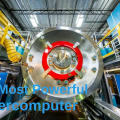IBM and the US Air Force are Developing a New Generation Neuromorphic Supercomputer
Back in 2014, IBM introduced a new type of chip, which is designed to implement neural networks. Then the developers told that the chip contains 1 million neurons and 256 billion synapses, which, with some reservations, is similar to the architecture of the neocortex. Such a processor can be used to solve problems where high and ultra-high performance is required. For example, you can use it to classify objects in a video stream (this is already done) in real time.
- Somewhat later Livermore National Laboratory (LLNL) announced the creation of a productive computer, the principle of which is similar to the principle of the human brain.
- The system includes 16 million neurons and 4 billion synapses. In the computer that was developed by the laboratory, only 16 TrueNorth chips, and the system itself was called IBM Neuromorphic System. Why can such systems be used?
- Neuromorphic computing offers very impressive new opportunities, and in general, this sphere is in line with our vision for future high-performance computing systems, says Jim Brase, one of the project’s leaders. “The potential of neuromorphic computing and machine intelligence will help change how we conduct research,” he continues. According to experts, based on such chips, you can create systems that are much more productive than the most powerful computers of our time.
- IBM is trying to improve the new technology. Now she is participating in a joint project with the US Air Force. The partners are going to create a new supercomputer that will include 64 million neurons and 16 billion synapses. At the same time, it will consume only 10 W of energy, that is, it can be connected to a regular power grid.
- According to the developers, the new computer (its name is TrueNorth Neurosynaptic System) will allow working with several data sources simultaneously (video, images, audio, and text). Now, one neuromorphic processor consists of 5.4 million transistors making up the nucleus, a total of 4096. The nuclei, in turn, create an array of 1 million digital neurons that interact with each other through 256 million electrical synapses.
Why does military so interested in it?
- The fact is that the US Air Force, namely the Air Force Research Lab (AFRL), uses the capabilities of the processor to identify military and civilian vehicles in radar from the air. The military claim that the chip works no worse than a powerful military computer. But energy is consumed twenty times less. In the future, with the increase in the performance of chips, the efficiency of the systems will be much higher.

The TrueNorth chip is manufactured using a 28 nm process technology. It contains 5.4 billion transistors and is a neuromorphic system with the following characteristics:
• One million emulated “neurons”
• 256 million emulated connections between neurons – “synapses”
• about 400 megabytes of SRAM memory (approximately 50 megabytes)

- But not only the military is interested in such processors. Samsung Corporation previously created a machine vision system based on TrueNorth. Its principle of operation differs from that of conventional cameras. And this system provides processing of a video stream with a speed of 2 thousand frames per second and higher. In the most modern cameras, this figure does not exceed 120 fps.
But all this is only an initial stage. After all, such processors allow you to create self-learning systems that can as close as possible approach the architecture of the human brain. Now the possibilities of TrueNorth are studied (and expanded) by more than 40 research organizations, including the most famous ones.





